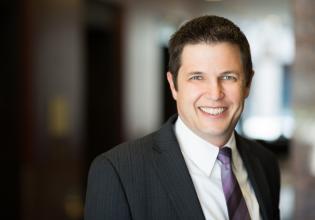
The USPTO's Director Iancu Discusses Options for § 101 Reform
For both patent Applicants and Patent Office Examiners, the Supreme Court’s 2014 Alice Corp. v. CLS Bank International decision has created ongoing uncertainty as to the proper scope of subject matter that should be excluded from patent protection. Since the Alice decision, there have been over 40 relevant decisions at the Court of Appeals for the Federal Circuit (and many more at the lower courts) that each attempt to interpret Alice in applying 35 U.S.C. §101. However, many examiners in the business method art units have allowed only a handful of application since the Alice decision, and many patent applicants have abandoned their patent applications after repeated rejections under section 101.
With rumors of updated 101 examination guidelines circulating , Andrei Iancu, Director of the United States Patent and Trademark Office, provided his opinion on the rocky terrain of patent subject matter eligibility in his remarks at the Intellectual Property Owners Association’s 46th Annual Meeting on September 24, 2018. He explained some problems he sees with the law of 101:
Let me put this in my own words: How can a claim be novel enough to pass 102 and nonobvious enough to pass 103, yet lack an “inventive concept” and therefore fail 101? Or, how can a claim be concrete enough so that one of skill in the art can make it without undue experimentation, and pass 112, yet abstract enough to fail 101? How can something concrete be abstract? These problems confound the most sophisticated practitioners in our patent system. People simply don’t know how to draw these distinctions. If something is not inventive, then invalidate it under 102 or 103. If something is indefinite, or too broad to be fully enabled or described, then invalidate it under 112.
To further simplify application of 35 U.S.C. §101, Director Iancu proposed a “synthesis” of previously identified abstract ideas into just three categories:
- Mathematical concepts like mathematical relationships, formulas, and calculations
- Certain methods of organizing human interactions, such as fundamental economic practices, commercial and legal interactions, managing relationships or interactions between people, and advertising, marketing, and sales activities; and
- Mental processes, which are concepts performed in the human mind, such as forming an observation, evaluation, judgment, or opinion.
With reference to the “directed to” requirement in the first step of the 101 analysis, Director Iancu proposes new guidance clarifying that Supreme Court Jurisprudence “effectively allows claims that include otherwise excluded matter as long as that matter is integrated into a practical application.” He explains that a practical application can include “a useful article of commerce or manufacture,” citing to a prior Supreme Court decision, Le Roy v. Tathem.
In the authors’ view, development of updated Patent Office examination procedures that incorporate Director Iancu’s suggestions should provide a more consistent and predictable standard for determining whether claims are “directed to” a prohibited category, which would ultimately benefit the economy.
Editor: Philip M. Nelson
